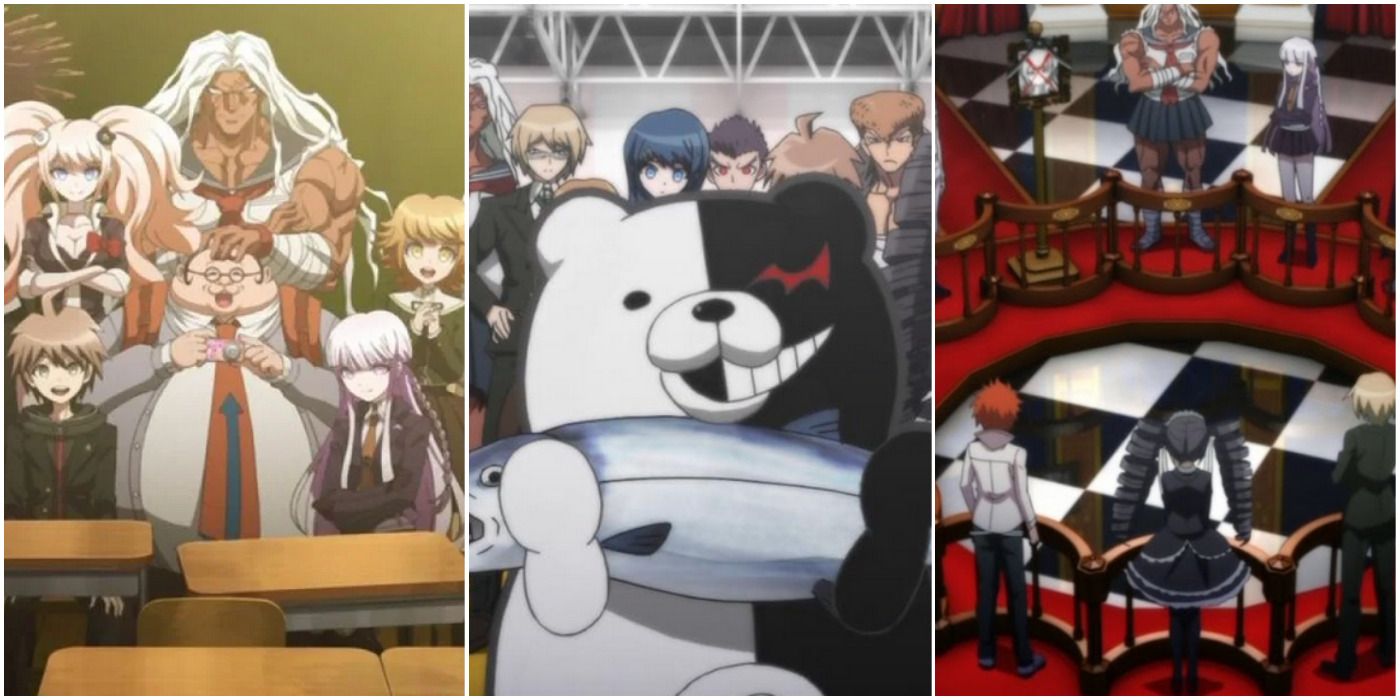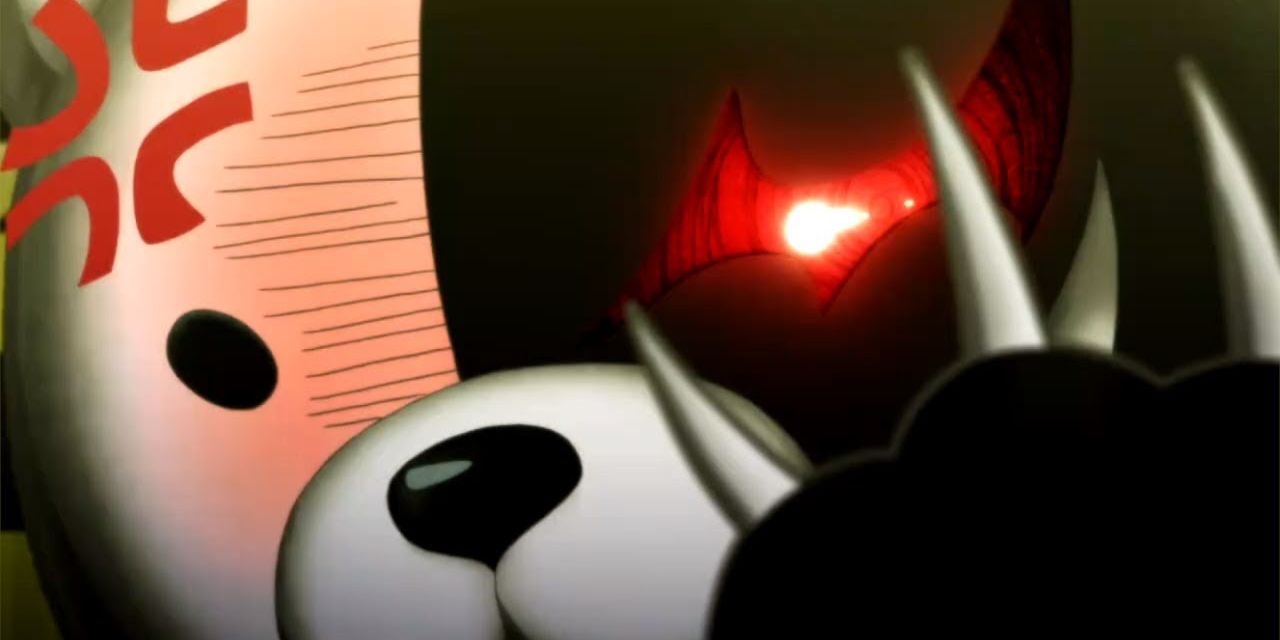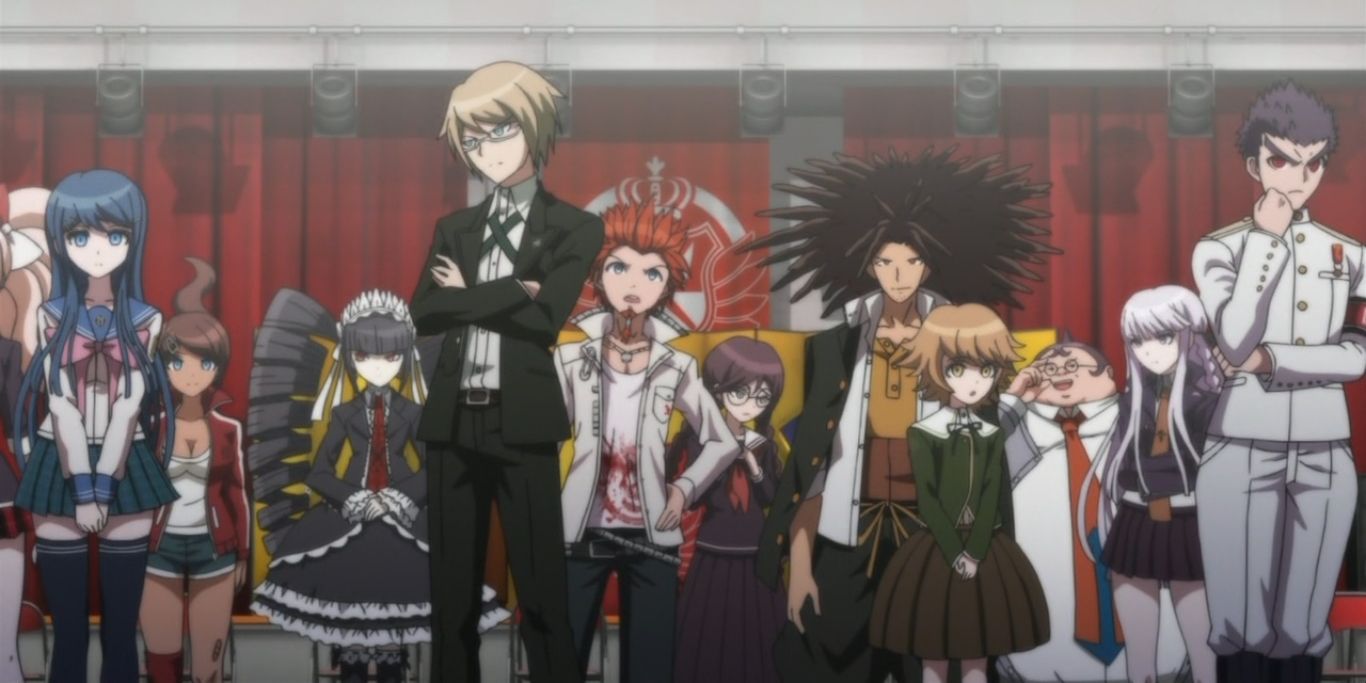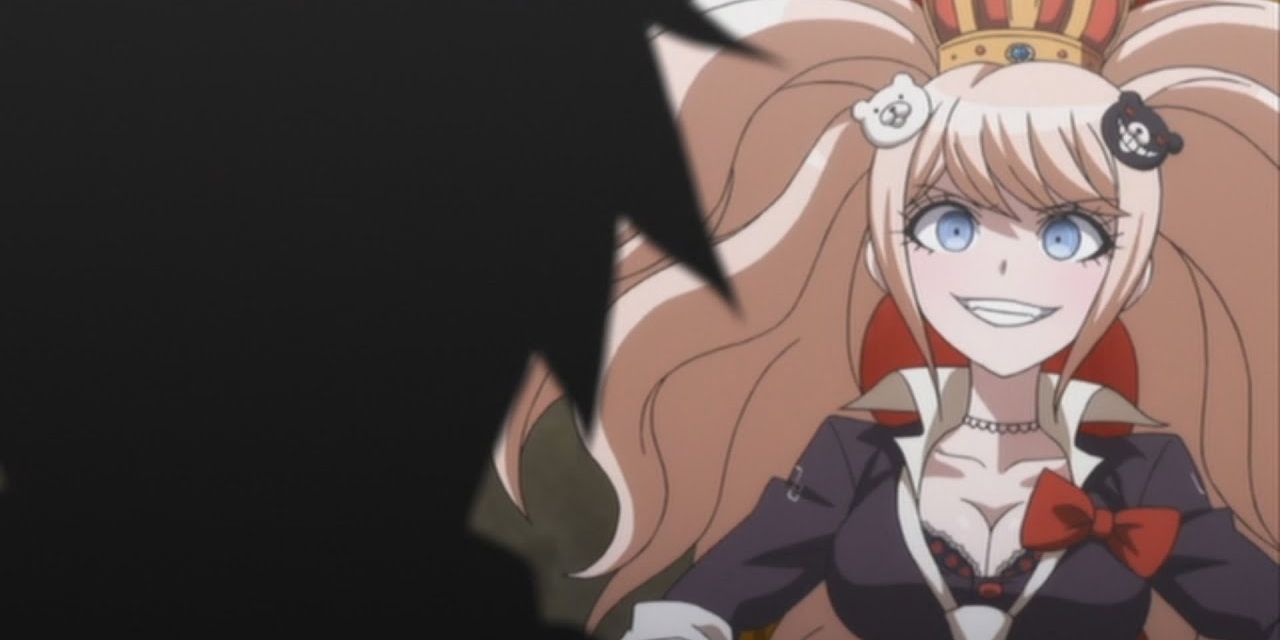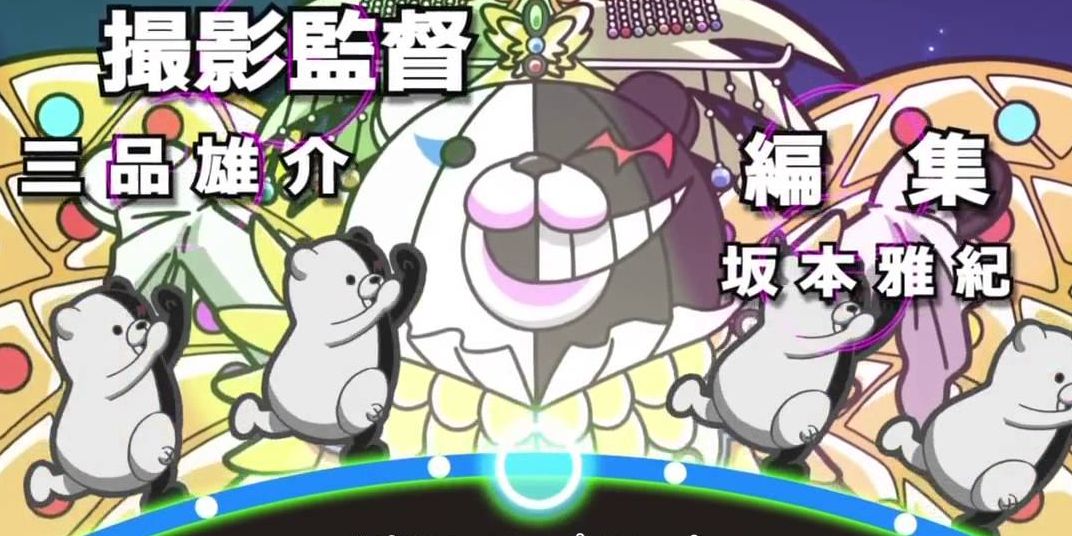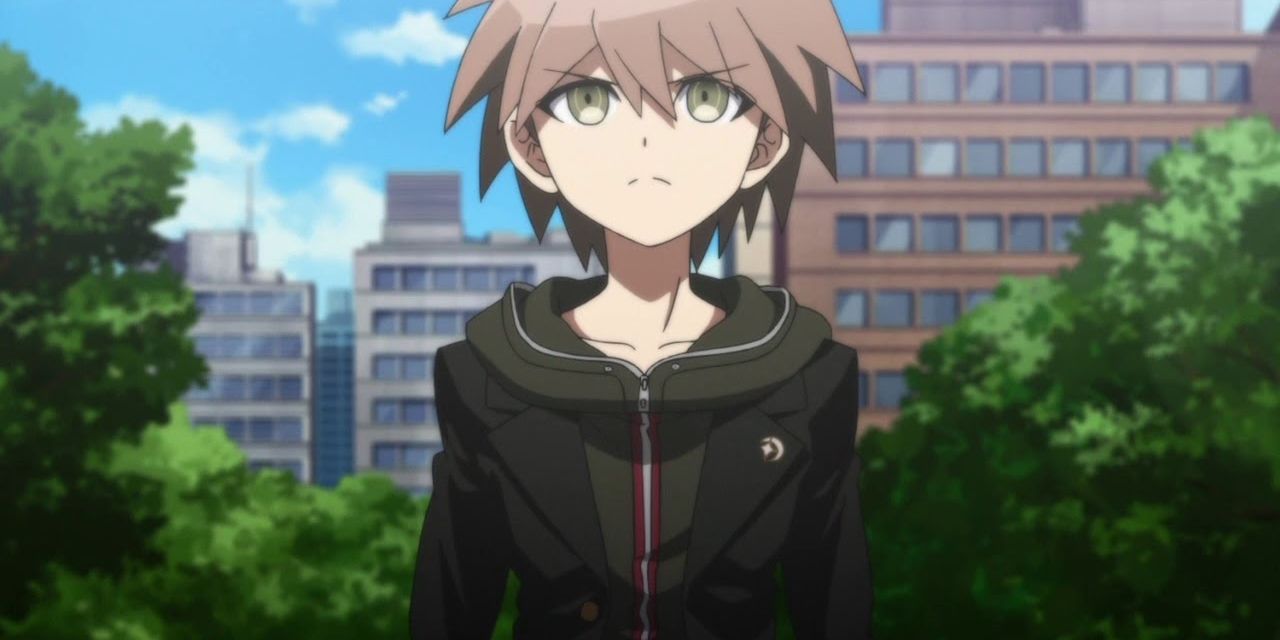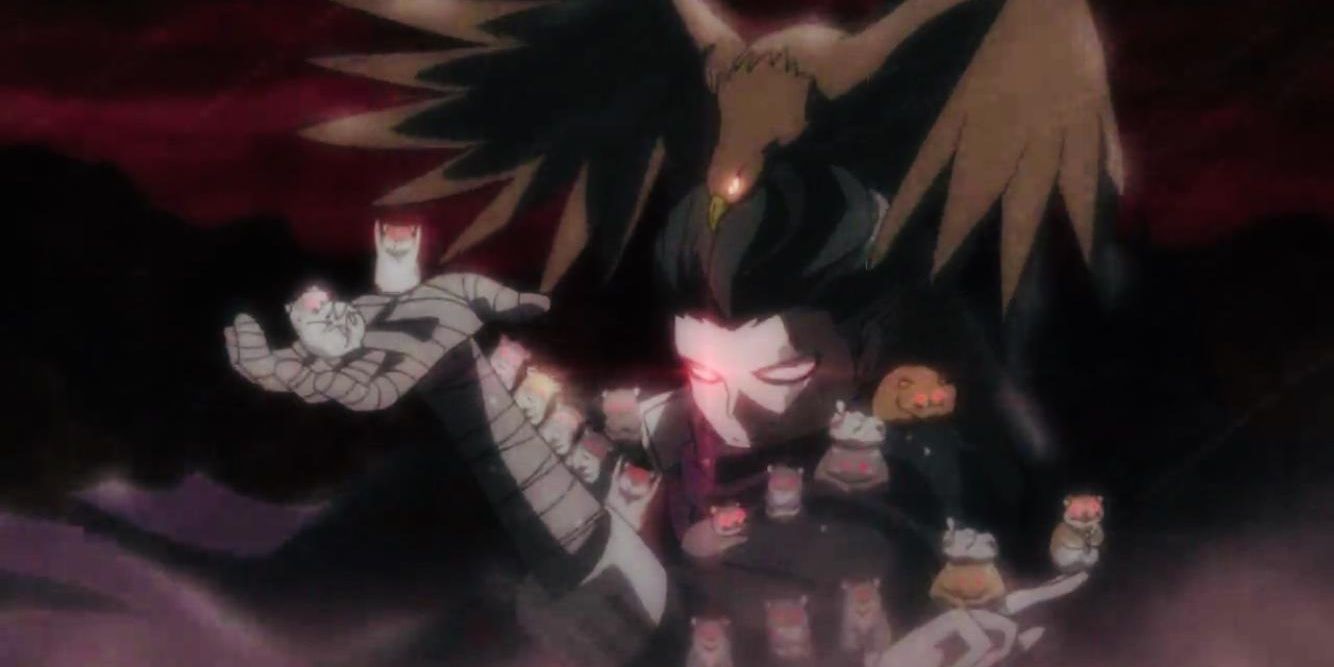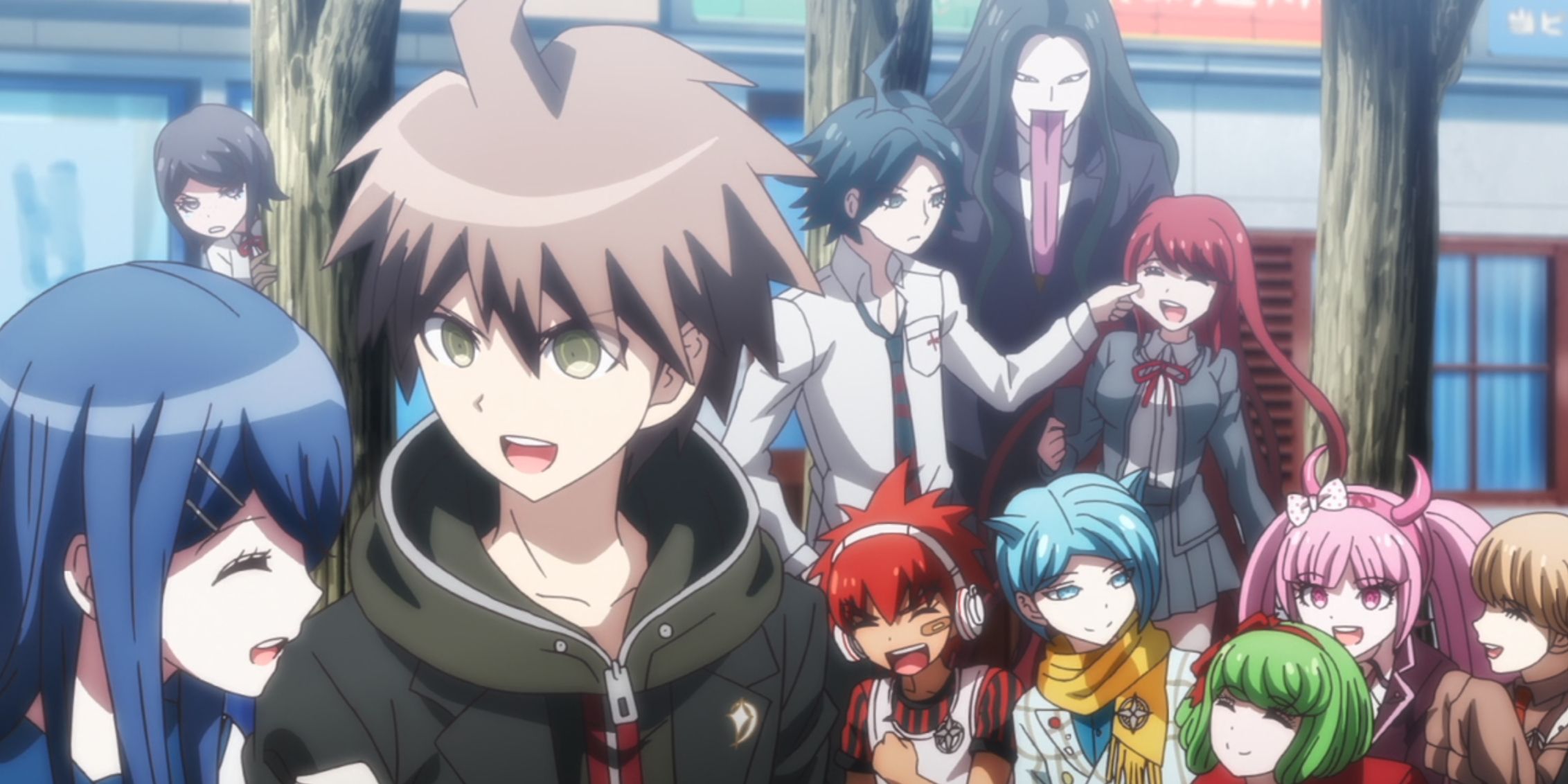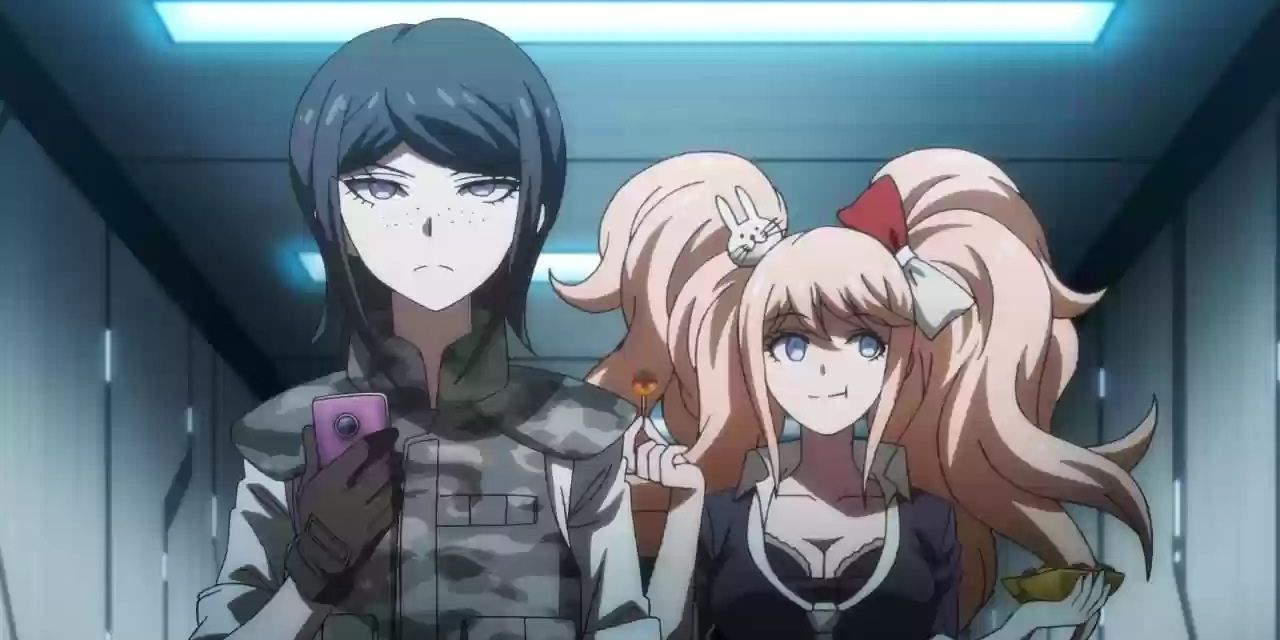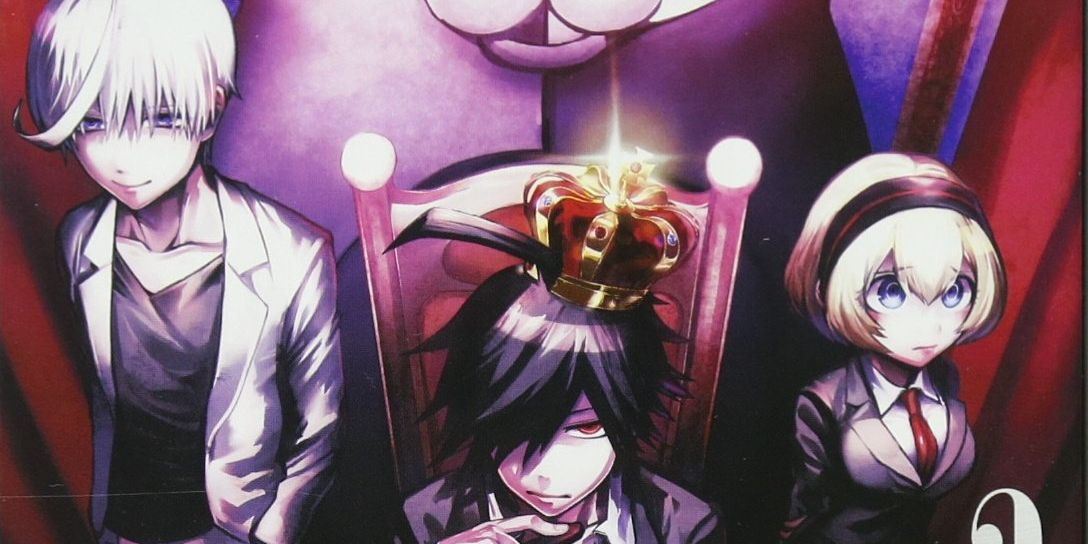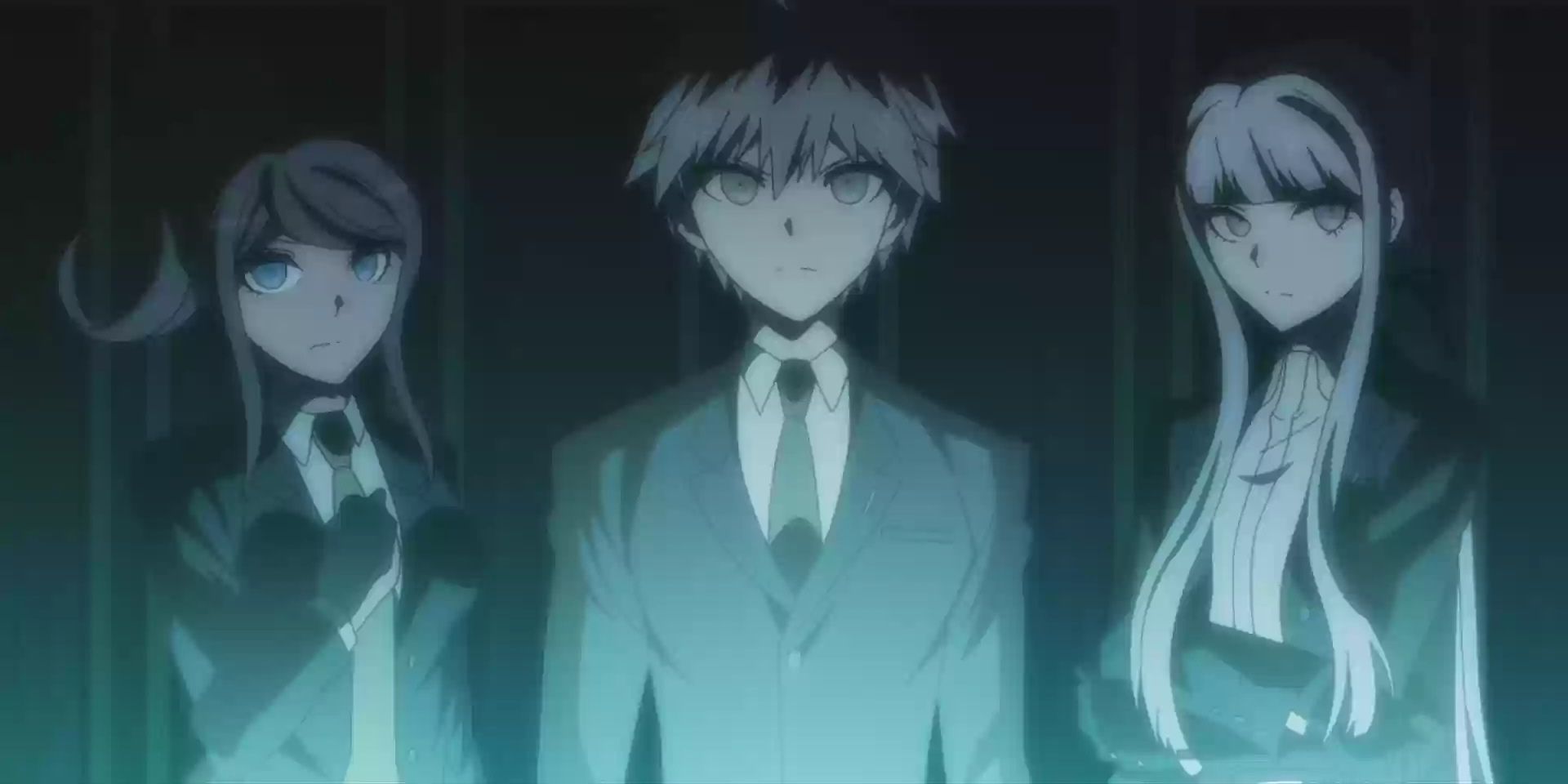There are plenty of anime that skew towards the stranger sensibilities of the animated medium, but Danganronpa is an extremely bizarre property. The anime follows a bunch of students whose lives are on the line and they’re pushed to go to dark places in order to secure their survival. Danganronpa: The Animation is one of the better examples of an anime that’s based on a video game and it truly helps the property evolve.
At its core, Danganronpa weaves a disturbing and unusual mystery, but it also functions as a brilliant psychological character study that demands several viewings. It’s easy to dismiss Danganronpa as just another video game anime, but there’s a lot more going on here.
10 Monokuma Is Created By Junko Enoshima And Monaca Towa
Monokuma is a robotic bear that's become the headmaster of Hope's Peak Academy and is the mascot of the Danganronpa series. The foreboding bear's duality represents both the hope and despair that surrounds the school. Monokuma is created by two students, Junko Enoshima as well as Monaca Towa, a fellow classmate who deeply admires Junko. The two use this army of robotic Monokuma to facilitate the murder games that define Danganronpa and make sure that this vengeance comes to pass. Junko and Monaca are just as twisted and unrepentant as Monokuma, but they use the bear as their cover.
9 Danganronpa: The Animation Adapts The First Video Game
Danganronpa: The Animation came to be after the small team at Studio Lerche became enamored with Spike Chunsoft’s Danganronpa: Trigger Happy Havoc. Lerche’s proposal was to carefully adapt the events of the game into 13 episodes. Lerche does a very good job in this department and while the anime is not flawless, it covers the important aspects of the game, retains the same eerie tone, and even finds ways to elaborate on certain character elements. Lerche’s history with video game adaptations suited them well here, but the other Danganronpa anime take a different direction.
8 The Home Video Release Extends The First Anime’s Finale
It’s a fairly common practice that the Blu-Ray and DVD releases for anime series feature certain perks that weren’t present during the televised airings. This can mean uncensored violence, cleaned up animation, or other touches that there wasn’t initially time to complete.
The release for Danganronpa: The Animation adds 14 more minutes to the anime’s final episode, which allows the nuance of the mystery to truly get appreciated. Spike Chunsoft were concerned that the whole story couldn't be contained in 13 episodes and this extended director’s cut of the finale speaks to the difficulty of that challenge.
7 The Opening And End Credits Pay Tribute To The Video Games
The separate Danganronpa anime are love letters to Spike Chunsoft’s games, but this adoration for the source material is especially clear in some of the anime’s opening and closing numbers. The first opening for Danganronpa: The Animation incorporates an instrumental mix of the video game’s main theme, but then adds to it. There's a special "Monokuma Song" opening that's used for one episode that references the video games’ Bullet Time Battle mechanic. Finally, the end credits for the final episode of Danganronpa: The Animation ostensibly remake the ending of Trigger Happy Havoc, which is a fitting conclusion for the anime.
6 The Anime Voices Are Different Than In The Video Games
The Danganronpa video games already have an anime aesthetic to their visual novel presentation style. The Danganronpa games feature English voice acting, but there's a level of disconnect when fans tune into the anime and hear different voices. The reason for this is that Funimation handles the Danganronpa anime's dubbing duties and they weren't enlisted for the previous work on the game. Bryce Papenbrook, who voices Makoto Naegi, is the one voice actor who remains the same in both the games and anime due to his location at the time. Funimation's talent does great work and embraces the characters.
5 The Second Anime Is Designed To Wrap Up The Video Games
There can be a very symbiotic relationship between video games & anime and in the case of Danganronpa there was direct contact between Studio Lerche and Spike Chunsoft.
Curiously, the creators behind Danganronpa were interested in concluding their original Hope's Peak Academy storyline, but they figured that the serious direction that they wanted to take the narrative wouldn't be appropriate for a video game. They decided that an anime would give them the necessary freedom to take the characters and story where they wanted without the certain mandates and restrictions of a video game.
4 A Special OVA Special Is Bundled With Danganronpa V3
There are two Danganronpa anime that cover diverse territory, but there's also an extra piece to the story that's available in a unique way. The limited edition PlayStation 4 release for Danganronpa V3: Killing Harmony includes the animated special, Super Danganronpa 2.5: Nagito Komaeda and the Destroyer of the World. It's a moving story that's set before the events of the Danganronpa 3 anime's Hope Arc and looks at a boy who's retreated into an artificial peaceful world as a coping mechanism. It's not essential, but it adds more depth to the Danganronpa 3's anime final episode.
3 The Second Anime Was Going To Be An Adaptation Of Danganronpa 2
The second Danganronpa anime initially planned to be a straight adaptation of Danganronpa 2: Goodbye Despair. The game's storyline would then be followed up in another visual novel as a continuation. However, this posed several issues like how the events of Danganronpa 2 proved to be too complex to adapt into an anime as well as the staff not wanting to have to put the survivors of this tragedy through yet another massacre. The anime pivoted and instead Danganronpa 3: The End of Hope's Peak High School concludes the story and Danganronpa V3: Killing Harmony begins anew.
2 The Danganronpa 3 Anime Has A Manga Spin-Off
The Danganronpa series has branched out in many different areas and found unique ways to extend and continue its story. Most of these properties look to the Danganronpa games for inspiration, but there's also a manga that's directly a spin-off to the events of the Danganronpa 3 anime. Danganronpa Gaiden: Killer Killer is a side story that takes place concurrently with the anime. Curiously, the manga was first released as just Killer Killer and kept its Danganronpa connection a secret, only for it to be a huge reveal in the manga's third chapter.
1 The Second Anime Aired As Two Overlapping Arcs
Danganronpa is incredibly ambitious when it comes to its storytelling, but this is perhaps best realized in Danganronpa 3: The End of Hope's Peak High School. The anime is divided into two completely different arcs that aired on different days. The Future Side functions as a sequel to Danganronpa 2 and heads into another killing game, whereas the Despair Side functions as a prequel to all of Danganronpa and examines the Remnants of Despair. Both of these storylines coincide into a final episode, the Hope Side, which elegantly reconciles everything.

